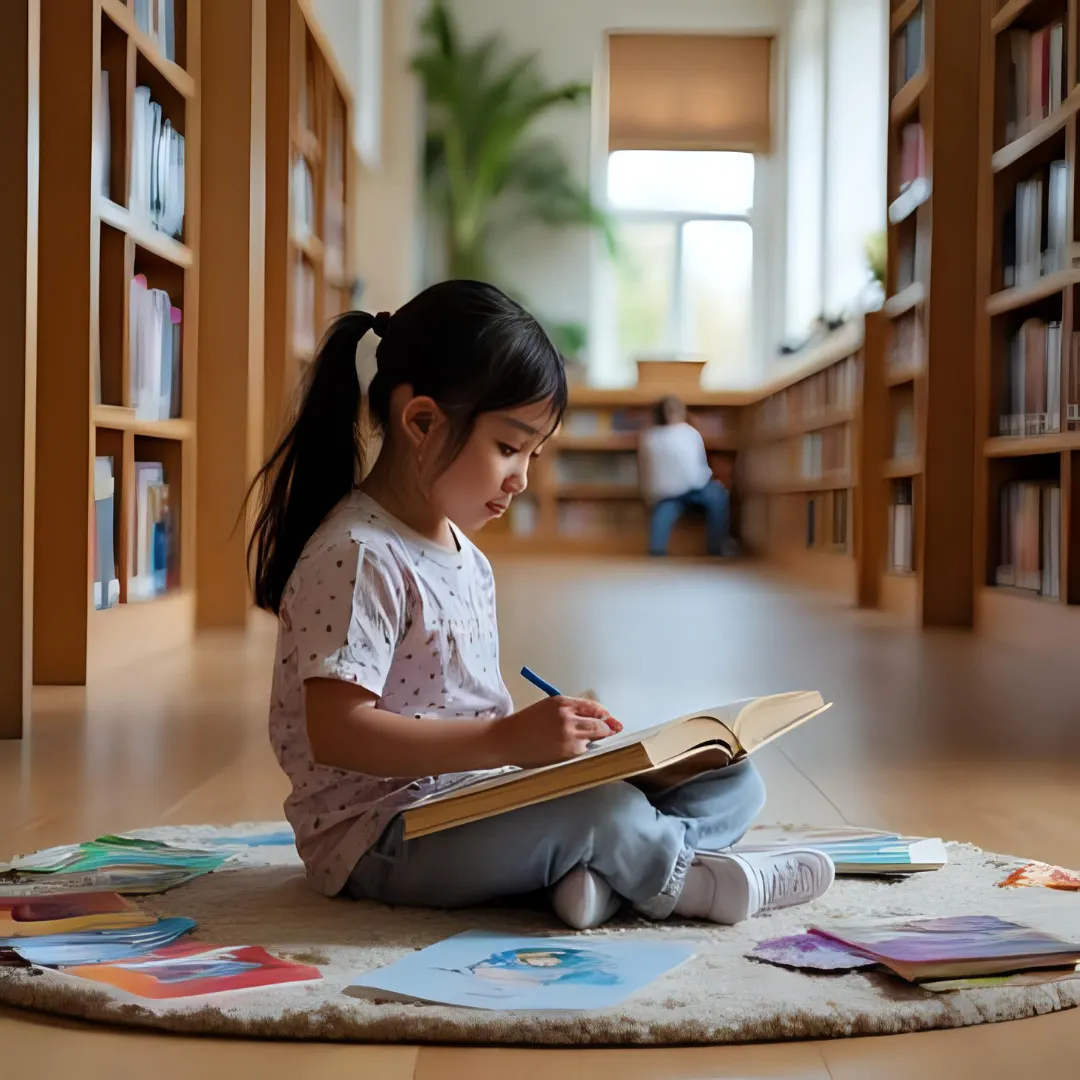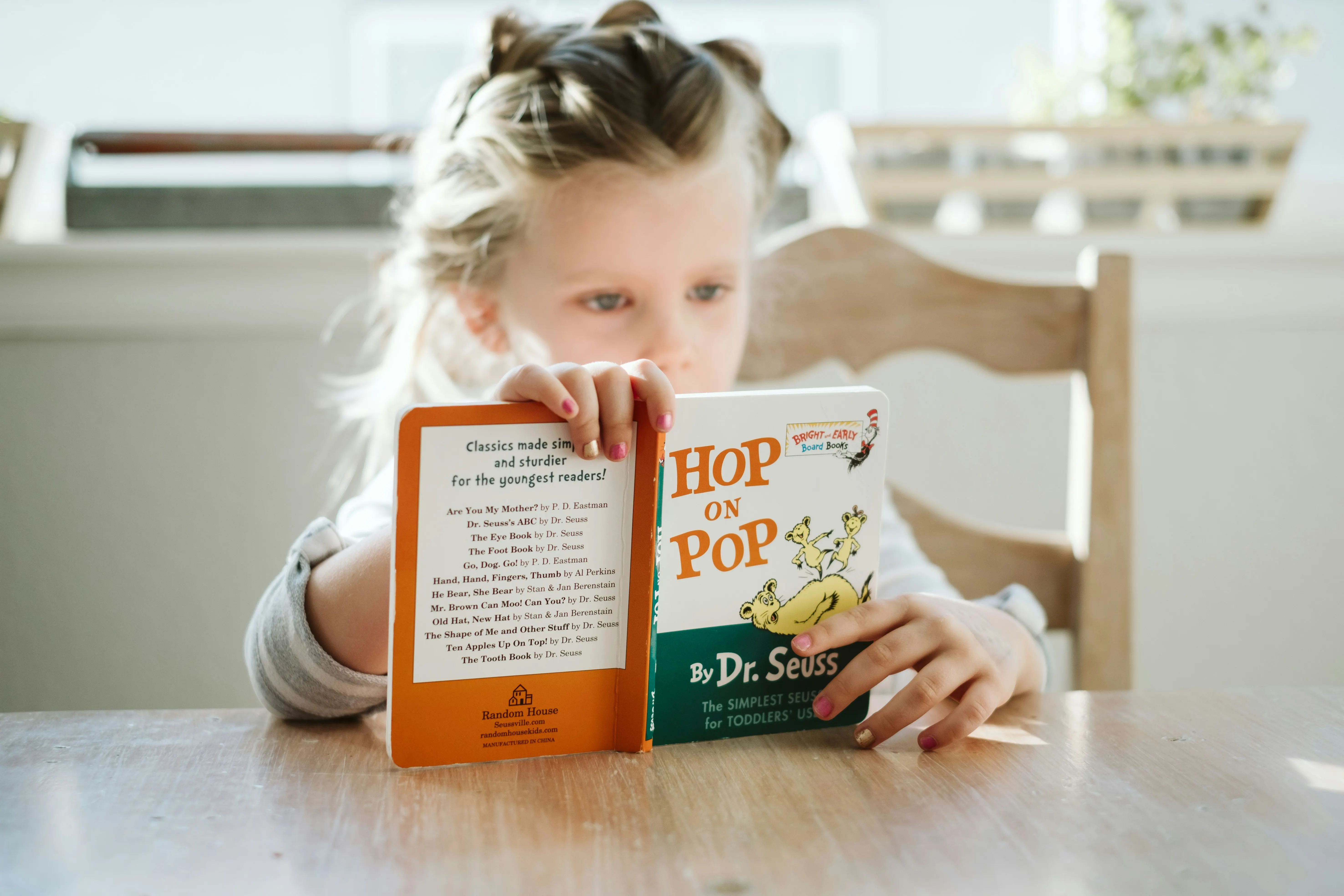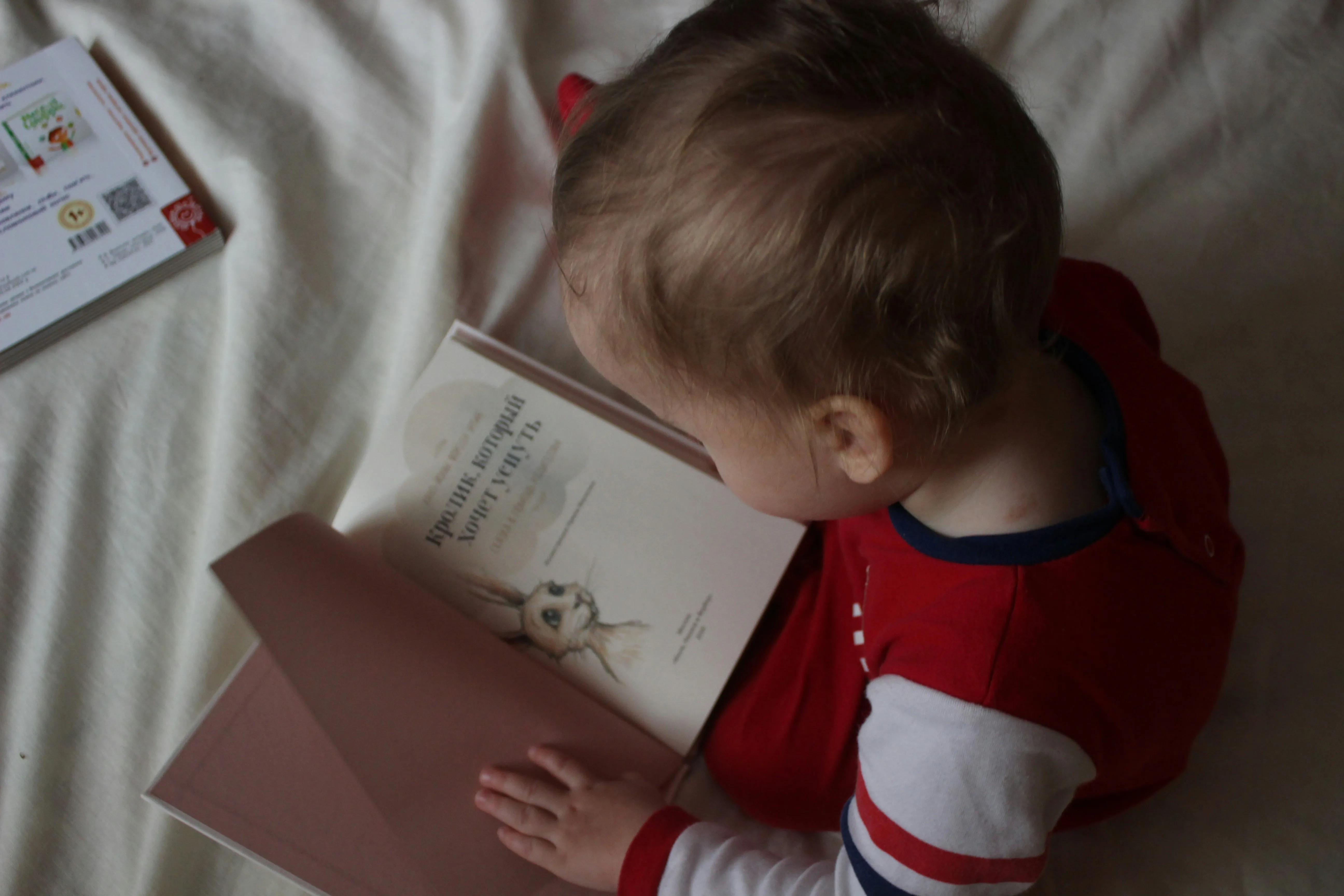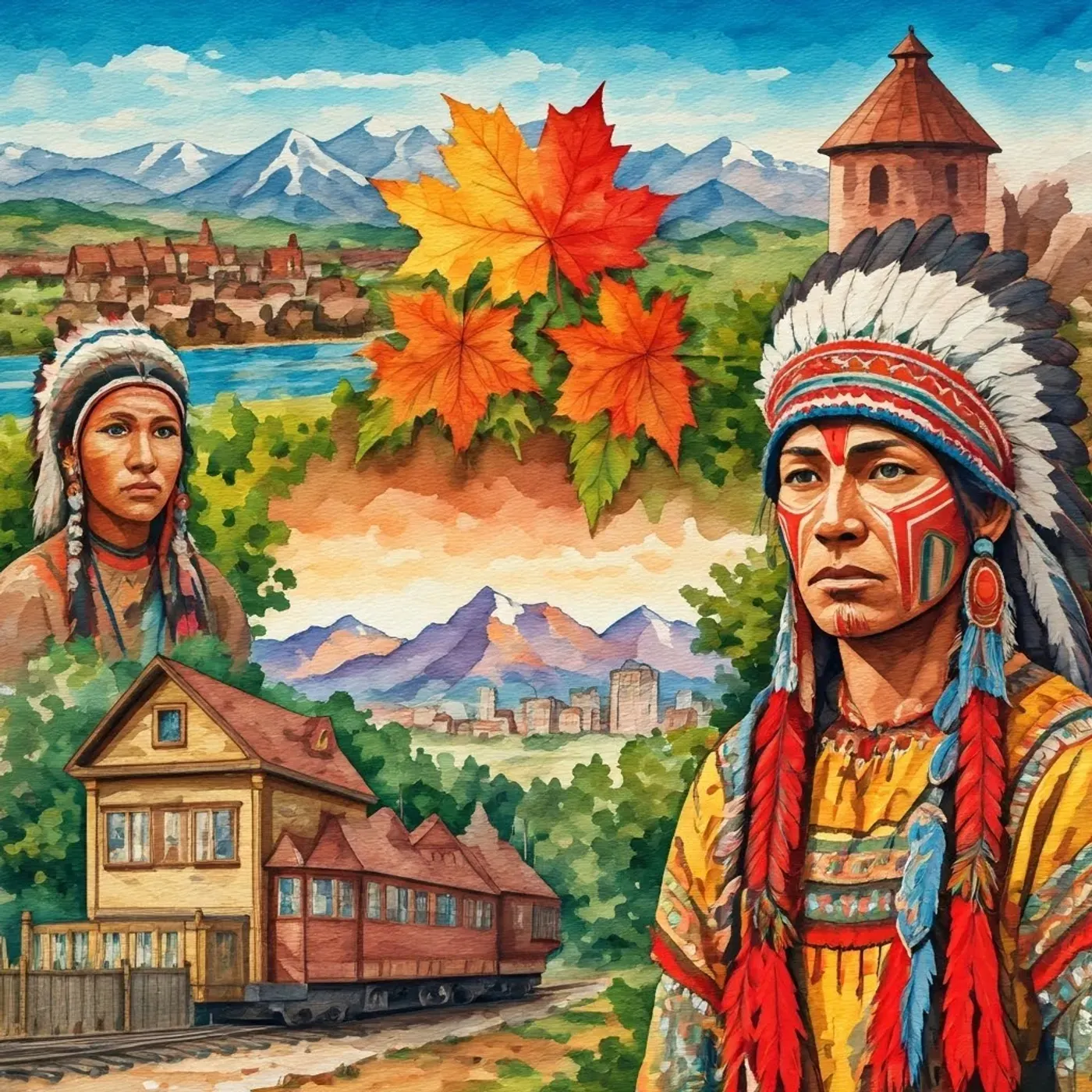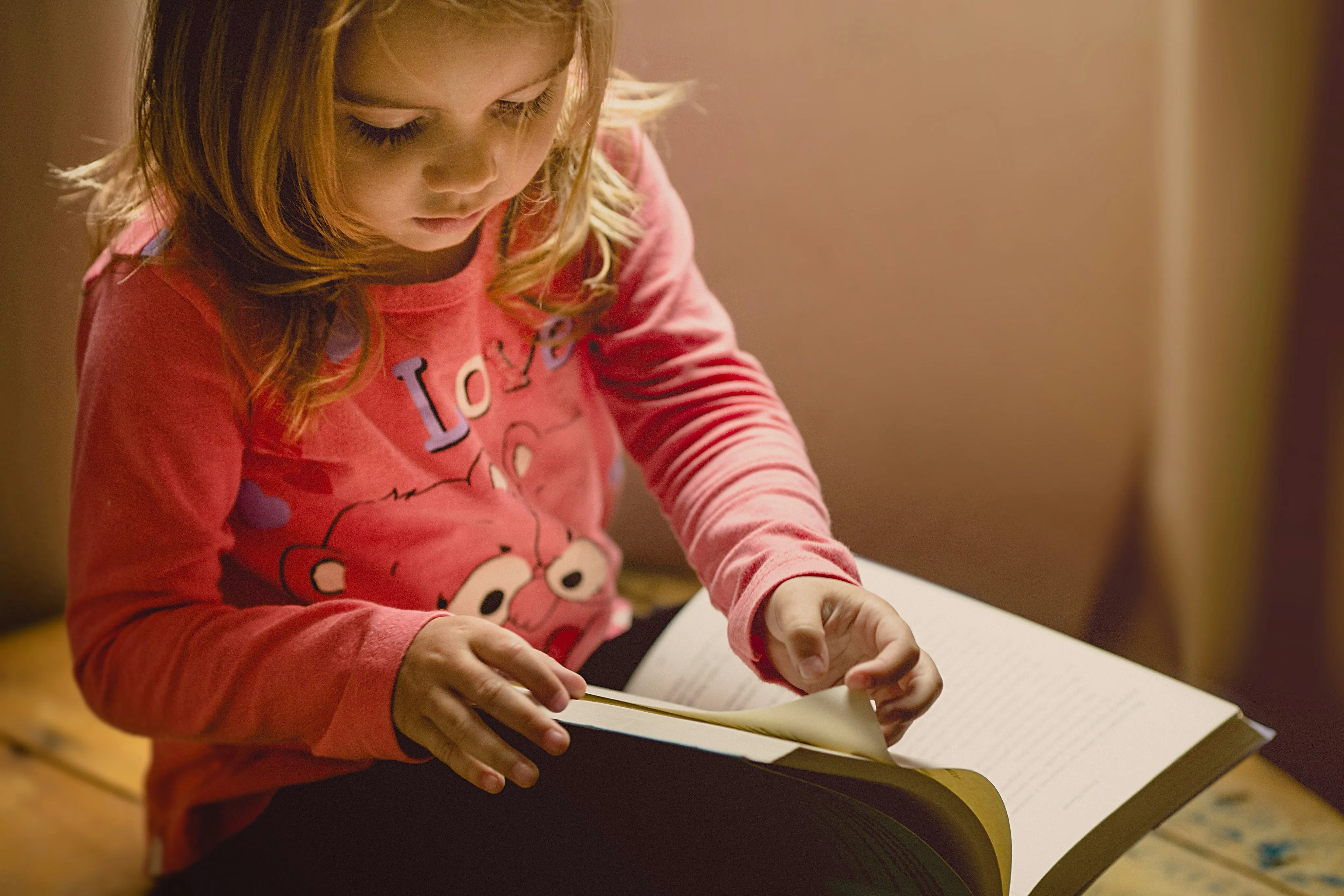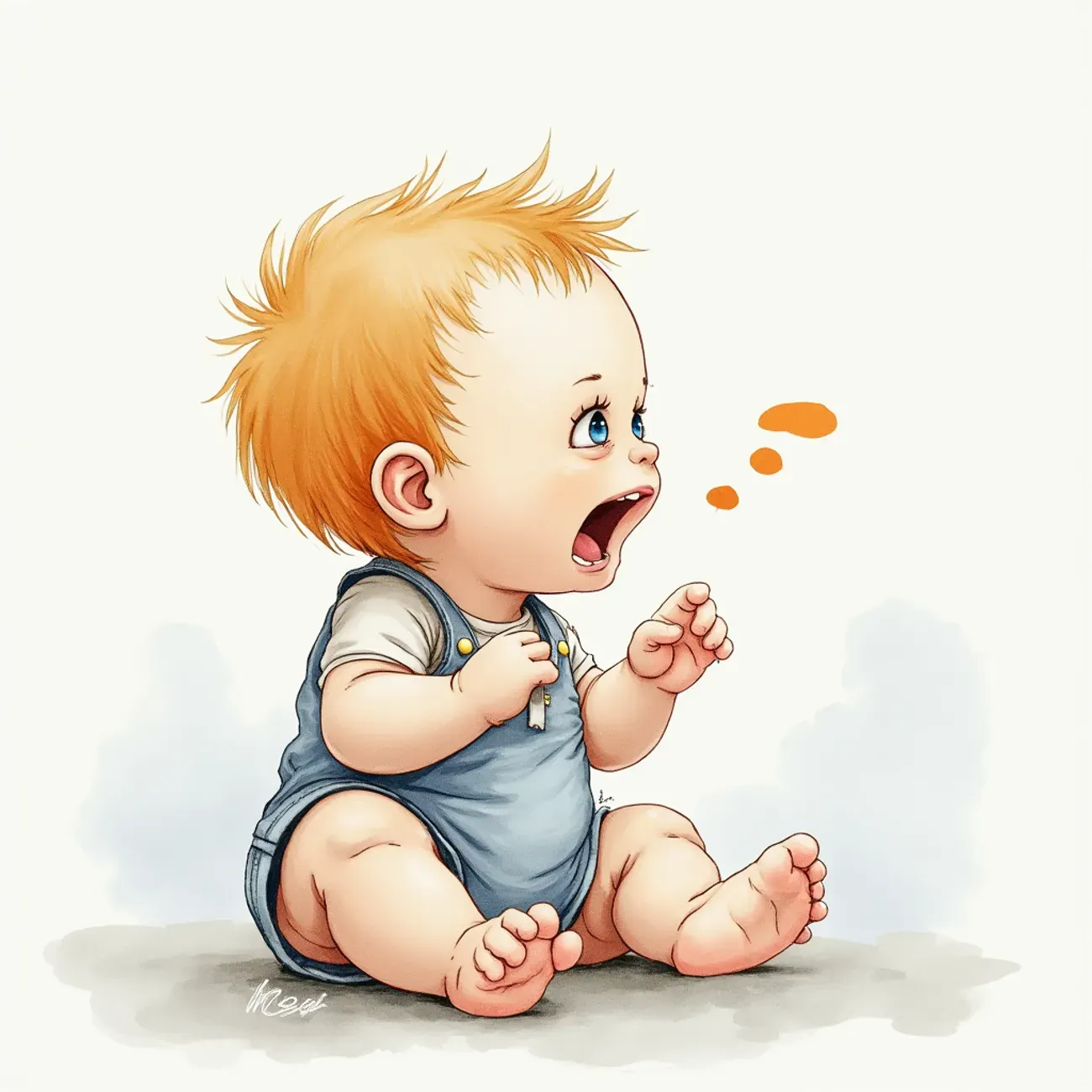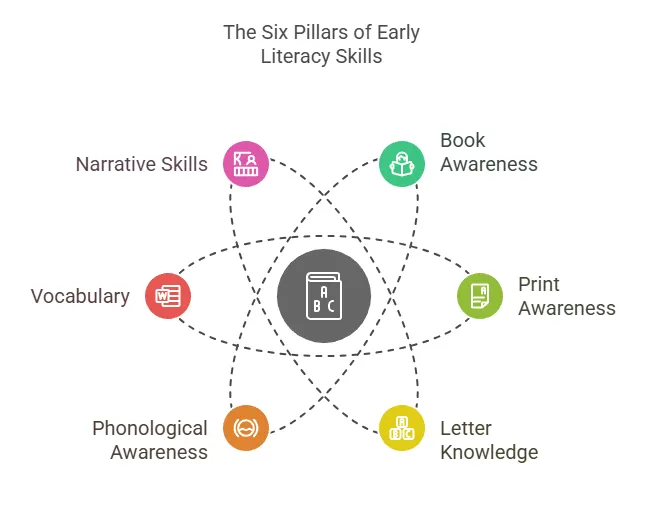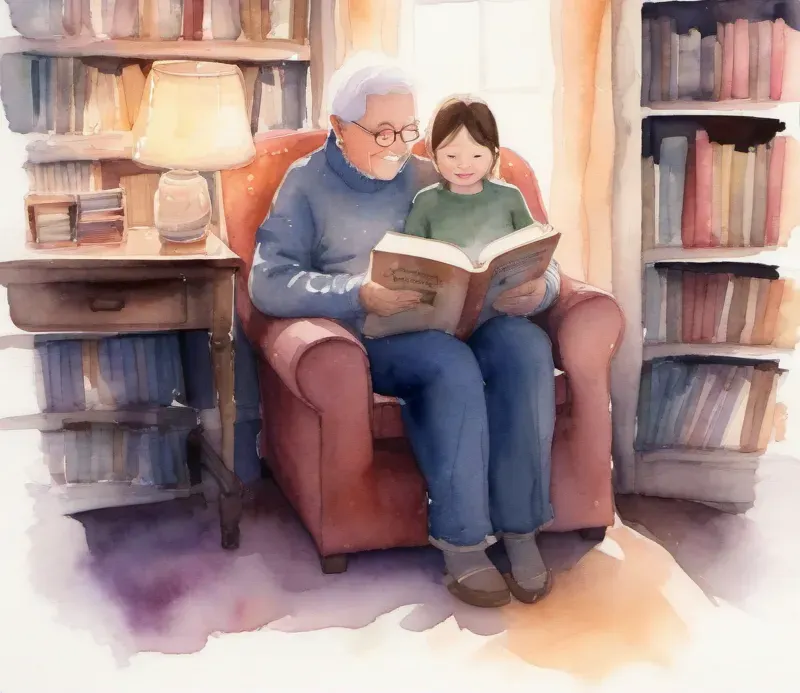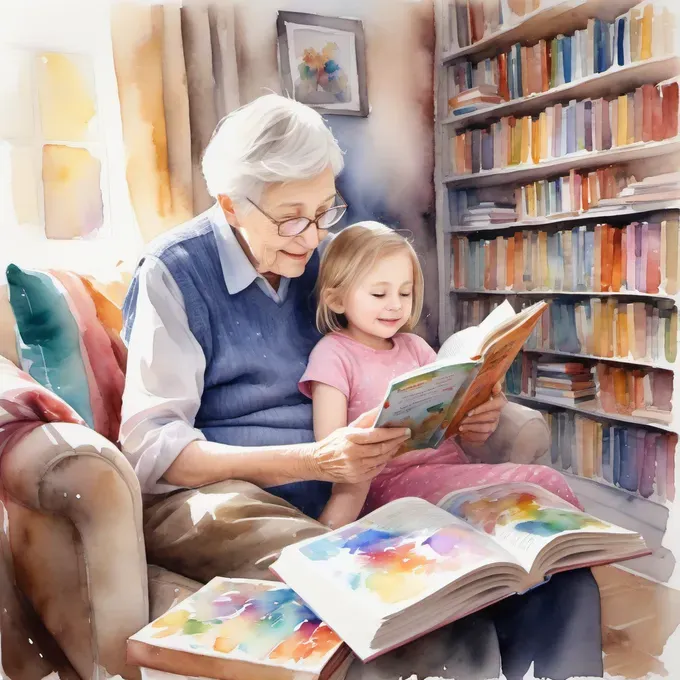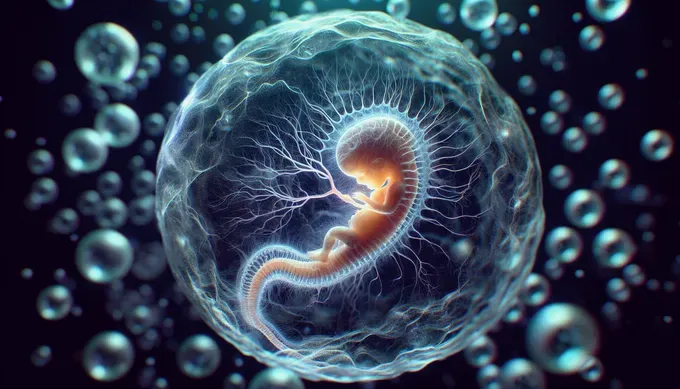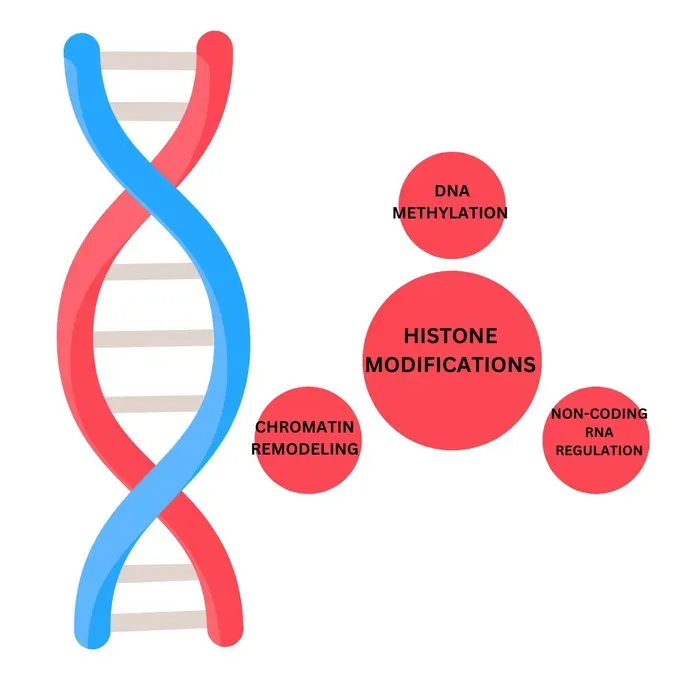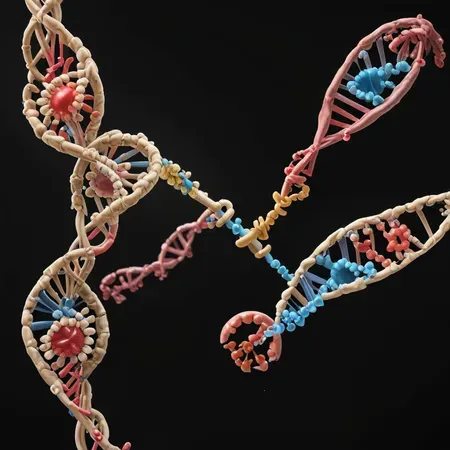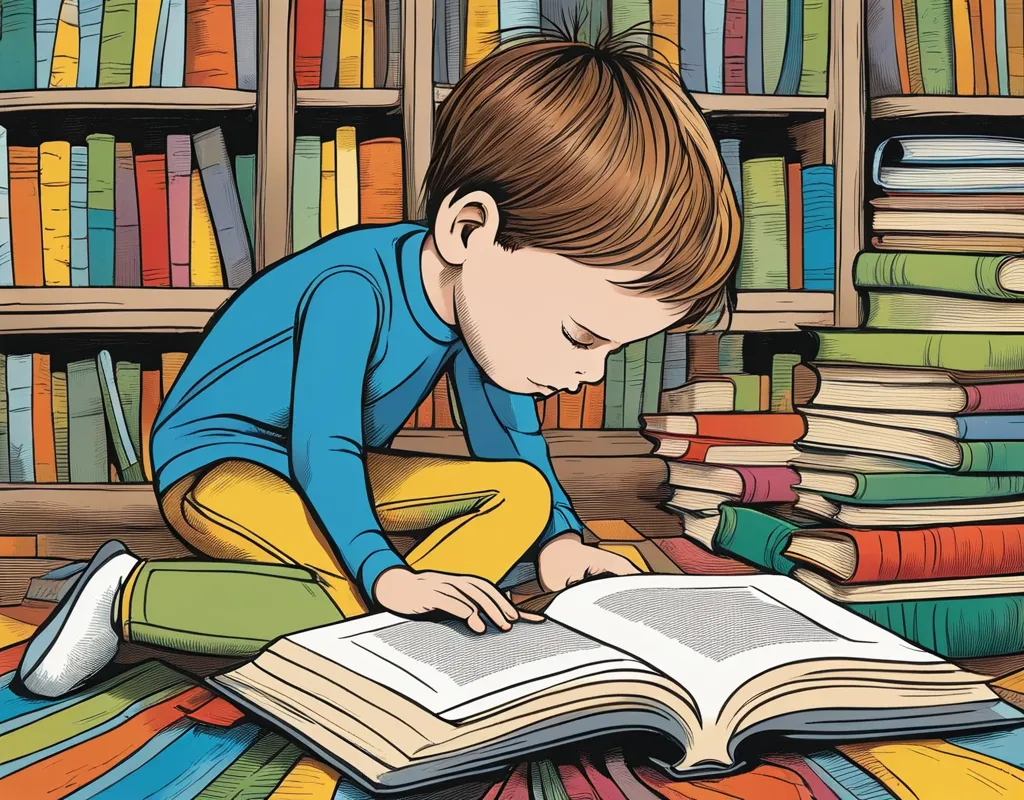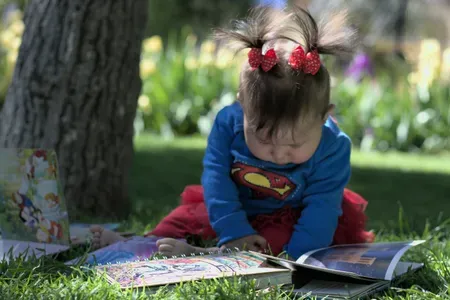Discover Canadian History for Kids: Fun Stories to Explore
Canadian History for Kids: Exciting Stories to Share
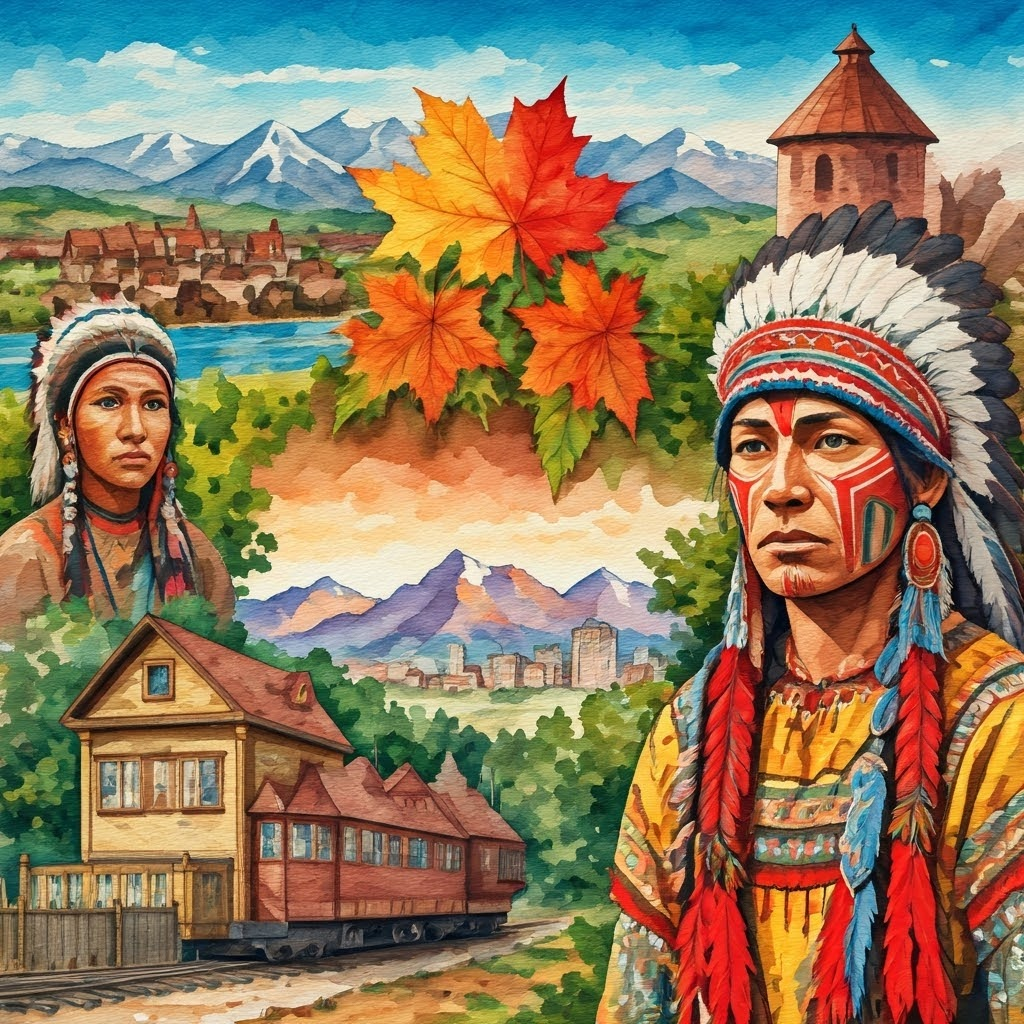
Key Highlights
- Indigenous peoples, known as First Nations and Aboriginal Peoples, originally inhabited Canada.
- French and British explorers played key roles in colonization, with figures like Jacques Cartier and John Cabot making historical discoveries.
- Confederation in 1867 marked Canada’s beginning as a self-governing dominion under a federal government.
- Key infrastructure projects like the Canadian Pacific Railway united vast regions.
- Civil rights movements and multicultural policies shaped modern Canada.
- Canada’s involvement in global conflicts, including World Wars, enhanced its national identity and role on the world stage.
Introduction
The history of Canada, including regions like Lower Canada, is an exciting journey that goes back thousands of years. It started with the arrival of Paleo-Indians. For centuries, Indigenous cultures lived in peace. Then, European settlers arrived and began to change things. This led to the diverse nation we have today. Canada became a federation, creating a central federal government. This helped unite its provinces. Children can learn about Canada’s stories. These stories cover Indigenous traditions, new ideas, and the country’s modern multicultural identity.
Indigenous Cultures and Traditions
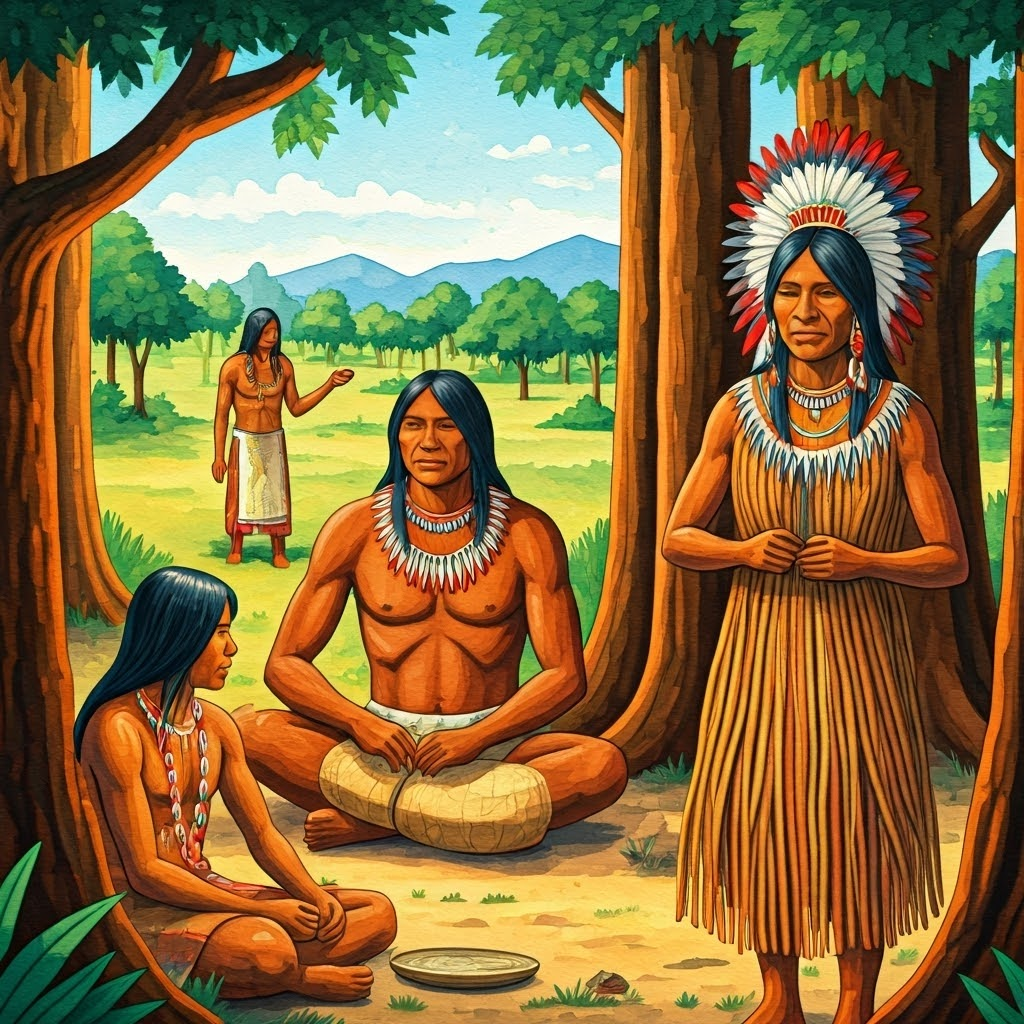 The Indigenous peoples of Canada created vibrant cultures long before European explorers came. They shared deep spiritual beliefs and had special social structures. Indigenous groups practiced ways of living that were kind to the environment and left lasting languages and traditions.
The Indigenous peoples of Canada created vibrant cultures long before European explorers came. They shared deep spiritual beliefs and had special social structures. Indigenous groups practiced ways of living that were kind to the environment and left lasting languages and traditions.
Today, the influence of Indigenous peoples on Canadian identity is clear. We see it in celebrations and ongoing efforts to keep their culture alive. Their role in today’s world highlights the need to understand Canada’s history from their perspective.
Early Indigenous Societies
Indigenous groups, like the First Nations and Aboriginal Peoples, are the first people of Canada, including those from the Northwest Territories. They came over 16,000 years ago from the Bering land bridge into North America. These early societies built strong trade networks and created their governance systems.
During the Woodland cultural period, Indigenous peoples in the Great Lakes and nearby areas made pottery and detailed wood carvings. They adapted their traditions to the changing environment, allowing them to thrive even in tough climates.
Indigenous communities are also known for their oral storytelling. They shared their history through stories and lessons that were passed down through many generations. Their teachings focus on respecting nature and spiritual life, which are still very important today. The impact of these societies can be seen in Canadian culture even now.
Notable Indigenous Leaders and Heroes
Among the Indigenous heroes, Louis Riel is an important Métis leader. He fought for the rights of his people in the early years of Canada. He is well known for leading the Red River and North-West rebellions. Riel represents perseverance and justice in Canadian history.
Besides Louis Riel, Indigenous communities also had explorers and peacemakers who helped shape Canada. Indigenous guides were key in helping early French and British mapmakers navigate Canada's large lands.
These contributions included defending Indigenous lands during colonization and working to keep their culture alive. Today, their legacies are honored as vital parts of Canada’s story.
Indigenous Spiritual Beliefs and Customs
Indigenous cultures often based their spiritual beliefs on living in harmony with nature. They focused on respecting animals, plants, and natural elements. These ideas led to important customs like storytelling and sacred rituals that were central to their communities.
Ceremonies such as the potlatch, which were common along the Pacific Coast, celebrated generosity and shared stories through big gatherings. Creating totem poles also showed their deep connection to the land and their ancestors.
Today, Canada recognizes Indigenous traditions by working to keep and include these practices. This lasting spiritual influence helps shape the country’s multicultural identity. It promotes respect for different traditions and values.
French and British Colonization
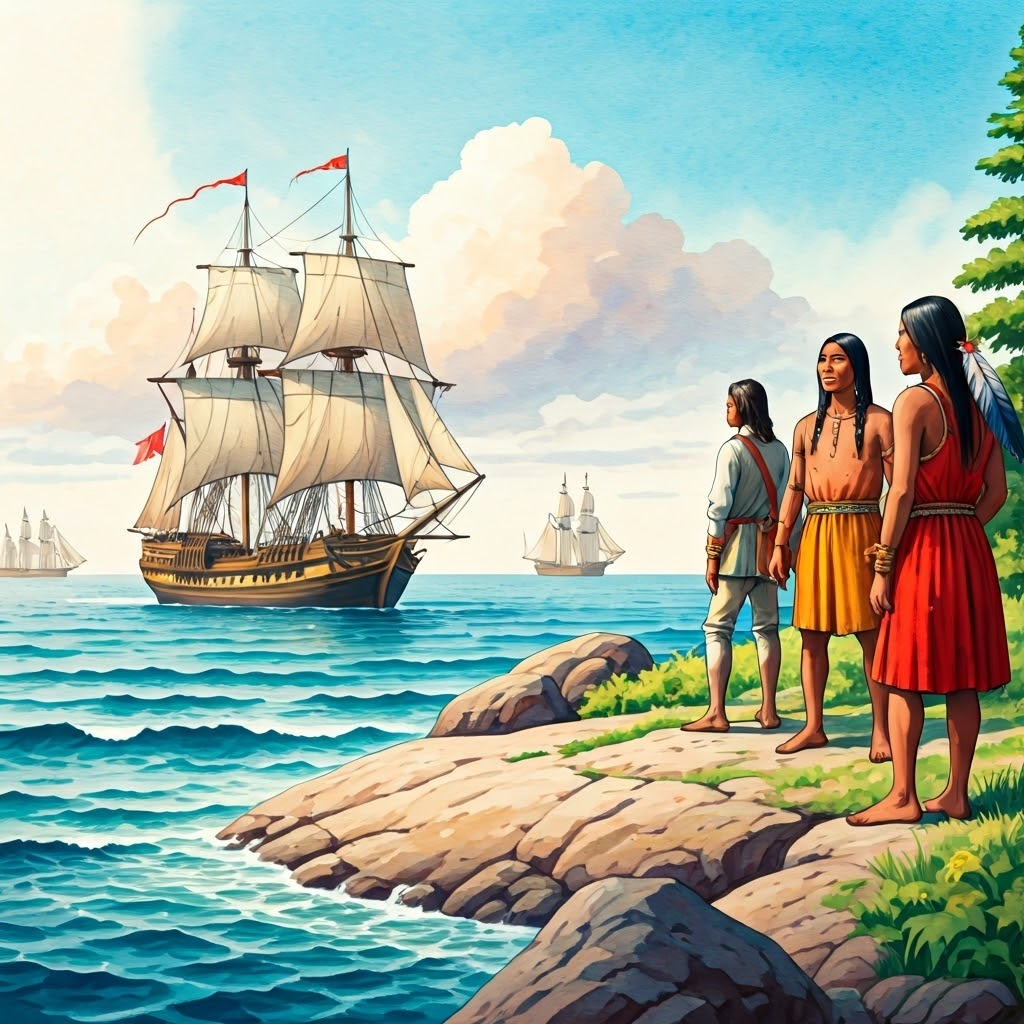 The arrival of European explorers like Jacques Cartier and John Cabot in the late 1400s started Canada’s colonization. French settlements grew in Quebec and Acadia. At the same time, British territories increased through trade and military actions.
The arrival of European explorers like Jacques Cartier and John Cabot in the late 1400s started Canada’s colonization. French settlements grew in Quebec and Acadia. At the same time, British territories increased through trade and military actions.
As France and Britain competed, important events like the Treaty of Utrecht affected Canada’s growth. Colonization helped shape many of Canada’s borders and government systems, including influences from countries such as New Zealand. It also had a significant impact on Indigenous peoples. These early conflicts helped create the modern nation we see today.
Arrival of European Explorers
The journeys of European explorers changed Canada a lot. Jacques Cartier took parts of Quebec for France in the 1530s. This started the creation of New France. Also, English explorer John Cabot looked at Newfoundland and Cape Breton in 1497 for King Henry VII.
Their discoveries encouraged more trips by traders and adventurers. This led to towns, especially in the Atlantic coastal areas. The hard work of traders and sailors helped people learn more about Canada's geography.
These new arrivals set the stage for a lively fur trade and maritime economy. This economy helped support early life in Canada.
Impact on Indigenous Peoples
European arrival changed life greatly for Indigenous communities. The fur trade brought new business chances, but it also led to the misuse of Indigenous resources.
Treaties such as the Treaty of Utrecht changed land control and caused tensions between settlers and Indigenous groups. Many people faced displacement, loss of traditions, and changes in their societies.
Even with these problems, Indigenous groups tried hard to stay strong and keep their culture alive. This struggle is still important for understanding the history of Canada.
Key Battles and Treaties
The conflicts between European powers played a big role in the early history of Canada, including the aftermath of the First World War, where many individuals were categorized as enemy aliens. The 1759 Battle of the Plains of Abraham was a key event. It was fought between British and French forces and led to British control of Quebec.
Treaties such as the Treaty of Paris in 1763 also changed things. This peace treaty ended French power in North America and strengthened British influence in places like Nova Scotia, part of Great Britain's new North American empire. These key events began the development of modern political systems in Canada.
Early leaders focused on diplomacy along with military efforts. This helped shape Canada into a united and peaceful country.
Confederation and the Formation of Canada
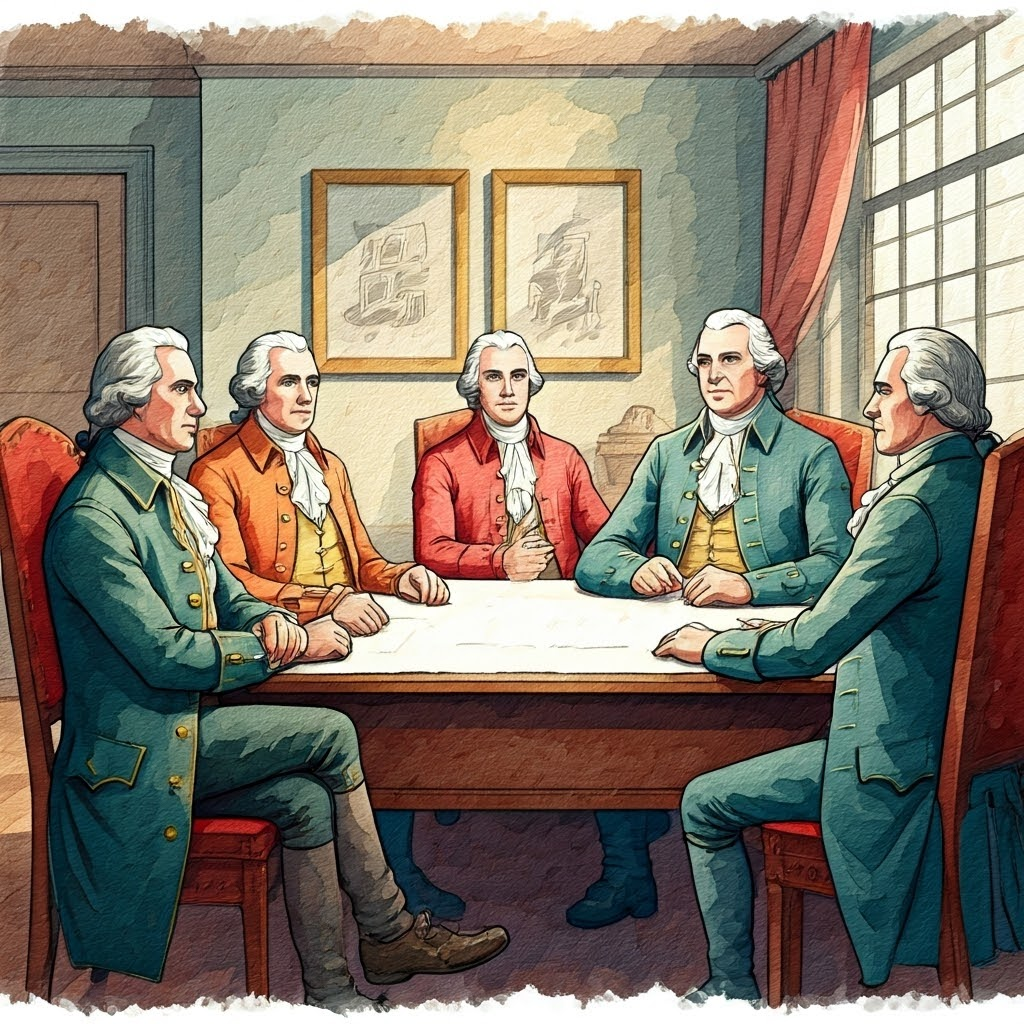 The joining of different British North American colonies was a key moment in Canadian history. In 1867, the Confederation brought together Ontario, Quebec, New Brunswick, and Nova Scotia. This new federal government aimed to be stronger politically and economically. It also needed to deal with outside threats, especially from the United States. Important leaders like Sir John A. Macdonald and George-Étienne Cartier were crucial in this effort. They wanted a responsible government that considered the various needs of different areas, the effects of the fur trade, and the hopes of First Nations.
The joining of different British North American colonies was a key moment in Canadian history. In 1867, the Confederation brought together Ontario, Quebec, New Brunswick, and Nova Scotia. This new federal government aimed to be stronger politically and economically. It also needed to deal with outside threats, especially from the United States. Important leaders like Sir John A. Macdonald and George-Étienne Cartier were crucial in this effort. They wanted a responsible government that considered the various needs of different areas, the effects of the fur trade, and the hopes of First Nations.
The Charlottetown Conference
The Charlottetown Conference of 1864 was a key event in Canadian history, particularly for delegates from New England's Nova Scotia, New Brunswick, Prince Edward Island, and the Province of Canada who came together to plan for the union of British North America. They discussed important topics like the political system and the power balance between the provinces and the federal government. Leaders such as Sir John A. Macdonald and George Brown were major figures in these talks. This conference helped to set the stage for the Canadian Confederation, showing how important teamwork is in creating a united country.
Major Figures in Canadian Confederation
Many important people helped shape the Canadian Confederation. Each one played a special part in forming the nation. Sir John A. Macdonald was the first Prime Minister of the British government. He worked hard, for the first time, to bring together the provinces and support a strong federal government. George-Étienne Cartier came from Quebec. He made sure that French civil law and culture were respected. Others, like Sir Wilfrid Laurier and Sir Robert Borden, supported ideas that met the different needs of Canada’s growing population. Their teamwork built a strong framework for the Dominion of Canada. This had a lasting effect on how the country would be governed and its national identity.
Provinces Involved and Their Contributions
Four important provinces helped shape Canada: Nova Scotia, New Brunswick, Quebec, and Ontario. Nova Scotia was important because of its coast. It was key for trade and building ships. New Brunswick helped with the country's structure and economy. Quebec brought its French background, which gave Canada a unique culture. Ontario, known as Upper Canada at first, was key to political leadership and growth. Leaders like Sir Robert Borden came from there. The teamwork among these provinces was essential to making confederation possible.
Building the Canadian Pacific Railway
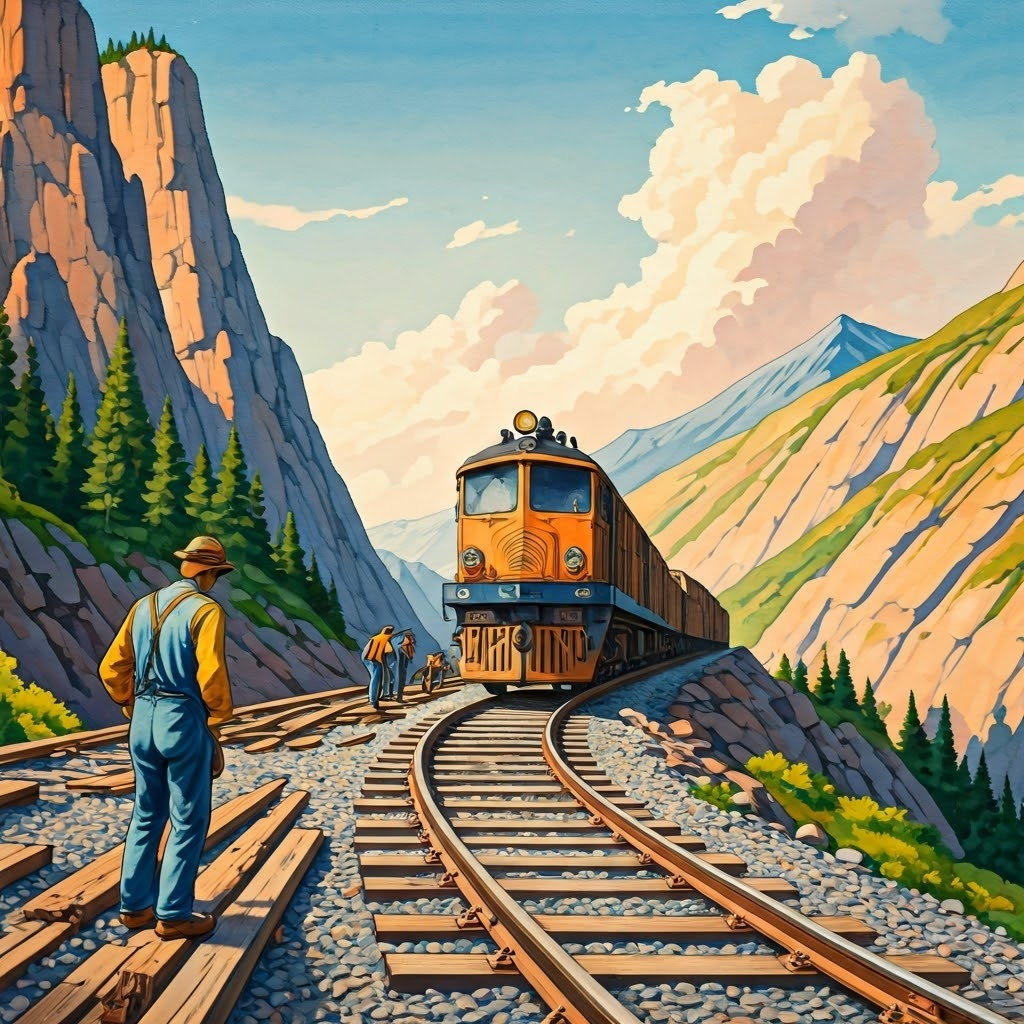
Building the Canadian Pacific Railway was very important for the growth of the country. It linked the east and west together. There were many challenges like rough land, bad weather, and not enough workers. Despite these issues, new methods and hard work from different people, including many First Nations, helped move the project ahead.
The railway did more than just help trade and transport. It brought people and provinces together. It played a key role in moving goods and people, helping the economy grow. This also made Canadian identity stronger during both world wars, including the efforts of the British Commonwealth Air Training Plan. It helped Canada become a more solid part of the British Commonwealth and beyond.
Challenges Faced During Construction
Building the Canadian Pacific Railway came with many challenges for its builders. Tough landscapes like steep mountains and large forests made it hard to move materials. There were also not enough workers, especially in faraway places, which caused big delays. Along with these issues, the government had to deal with political problems and money limitations.
They also had to make deals with the Indigenous communities affected by the railway's route. In the end, balancing the need for economic growth and social duties was key to dealing with these tough challenges. This helped make the railway a strong symbol of unity and progress in Canada as it developed quickly.
Economic Impact of the Railway
The Canadian Pacific Railway was important for connecting different regions. It helped boost trade and commerce in the country. It moved goods more easily, improving the fur trade by linking suppliers in western Canada to markets in the east and beyond. This major project also created jobs and attracted immigrants, helping to build cities and support the economy.
The railway was key in building Canada’s infrastructure. It encouraged tourism and brought together different provinces. This connection set the stage for working together economically, creating growth that is still seen today.
The Railway and Canadian Unity
The building of the Canadian Pacific Railway was an important time that brought Canada together. It linked Eastern Canada to the western provinces. This made it easier for people and goods to move around, helping to close cultural and economic gaps. This big project connected places like British Columbia and Nova Scotia. It also helped strengthen a national identity among different cultures, including those from First Nations and colonial histories. In the end, this railway became a symbol of a united Canada. It helped improve communication and teamwork, setting the stage for future growth and development.
The Struggle for Civil Rights
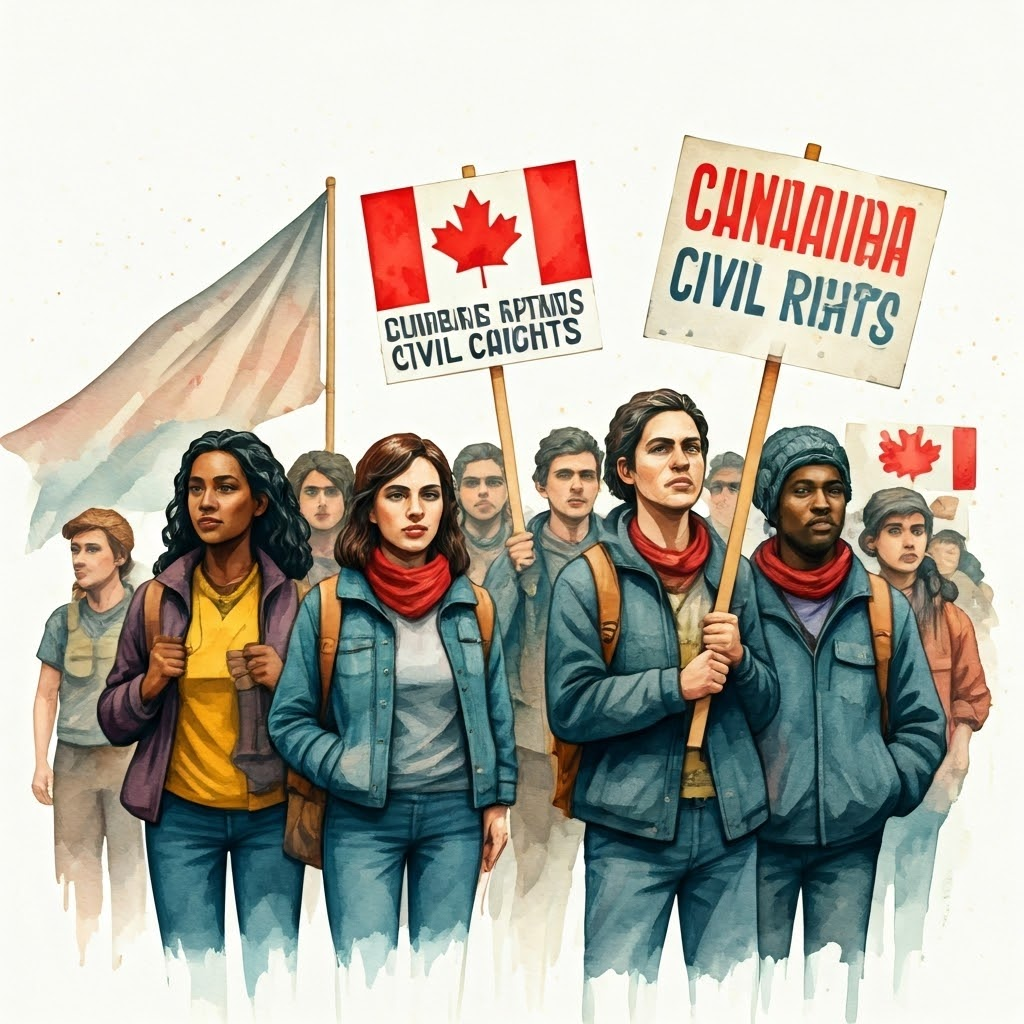 Diverse communities have been working hard for civil rights in Canada for many years. Important leaders have spoken up for Aboriginal peoples, working-class citizens, and other groups that often face challenges. Key moments, like starting organizations and winning important legal cases, helped shape these movements. Events like the War of 1812 and the Second World War showed the valuable contributions of Canadians from different backgrounds. Today, there are still issues that need to be addressed. Modern movements are building on the hard work of those who fought for equality and justice in our society.
Diverse communities have been working hard for civil rights in Canada for many years. Important leaders have spoken up for Aboriginal peoples, working-class citizens, and other groups that often face challenges. Key moments, like starting organizations and winning important legal cases, helped shape these movements. Events like the War of 1812 and the Second World War showed the valuable contributions of Canadians from different backgrounds. Today, there are still issues that need to be addressed. Modern movements are building on the hard work of those who fought for equality and justice in our society.
Key Figures in the Civil Rights Movement
Significant individuals were key in the civil rights movement in Canada. Activists like Viola Desmond stood up against racial discrimination. She opened doors for future changes. Louis Riel was also important. He fought for the rights of Métis people during a tough time. Their work showed the challenges that First Nations and other marginalized groups faced. These key figures helped gain support. They also started conversations that brought about real change in Canadian society. Their goal was to achieve equality and respect for everyone in this diverse country.
Important Civil Rights Milestones
Significant events have shaped civil rights in Canada, including actions led by the liberal party. They have strengthened the nation’s promise of equality. The “British North America Act” from 1867 was very important, just as the earlier Quebec Act played a crucial role. It set up the system for responsible government and fair representation. In the 1960s, changes to the “Indian Act” aimed to end unfair practices against First Nations. The “Multiculturalism Policy” of 1971 showed how much diversity matters, helping to create an inclusive society. More recently, the 2005 decision to recognize same-sex marriage was a major step forward for LGBTQ+ rights. It shows the constant efforts to encourage fairness in Canadian society.
Ongoing Issues and Modern Movements
In recent years, there have been many ongoing issues about the rights and recognition of First Nations and Aboriginal peoples in Canada. Movements for social justice and fairness show the need for reconciliation. They also want more Indigenous voices in making policies. Climate change has made these discussions more urgent. This has led to new movements that focus on being sustainable and protecting sacred lands. Moreover, the recognition of systemic racism and the call for complete reforms show a rising awareness of social inequalities. This has led to more activism from different communities in the country. They are all working for a future that includes everyone.
Pioneers and National Heroes
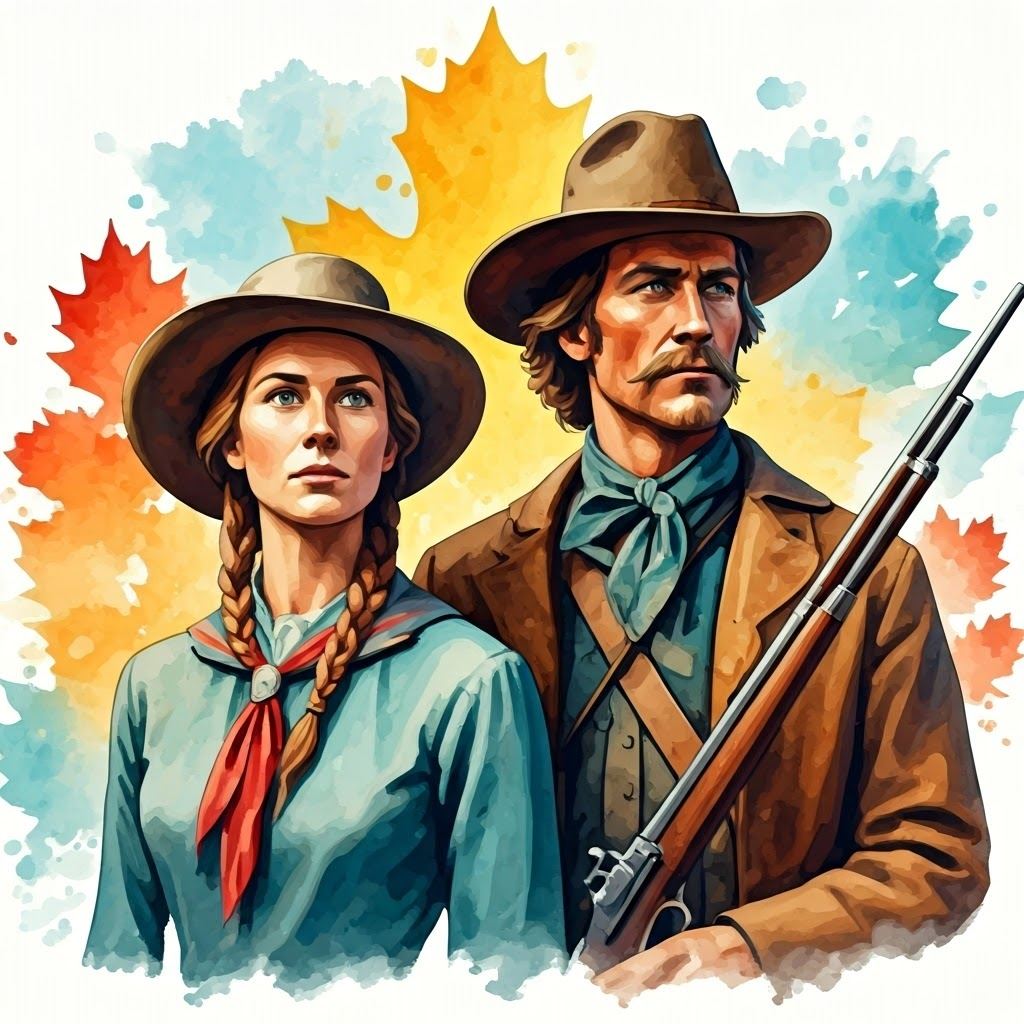 The contributions of pioneers and national heroes shape Canadian history. People like Laura Secord showed great bravery during the War of 1812. Explorers such as Jacques Cartier and John Cabot explored large areas and helped start trade with Indigenous peoples. This paved the way for future generations. Moreover, important women have played vital roles in different fields, from science to the arts. They promoted innovation and inclusivity, which are important parts of Canada's identity today. Their legacies fill many with pride for their country.
The contributions of pioneers and national heroes shape Canadian history. People like Laura Secord showed great bravery during the War of 1812. Explorers such as Jacques Cartier and John Cabot explored large areas and helped start trade with Indigenous peoples. This paved the way for future generations. Moreover, important women have played vital roles in different fields, from science to the arts. They promoted innovation and inclusivity, which are important parts of Canada's identity today. Their legacies fill many with pride for their country.
Laura Secord and the War of 1812
Her amazing story is closely tied to the War of 1812. During this time, Canada was worried about being invaded by the United States. Laura Secord became a hero when she risked her life to warn British soldiers about an upcoming American attack near Beaver Dams. Her journey through the thick woods showed her bravery and highlighted how important women were during this difficult time.
The information she shared helped the British win important battles. This made her an important symbol of courage and dedication in Canadian history.
Famous Canadian Explorers and Their Discoveries
Exploration has played a big role in shaping Canada’s history, particularly during the era of the Hudson Bay Company. Samuel de Champlain, known as the "Father of New France," founded Quebec City and mapped much of eastern Canada. This helped future settlers to come. Jacques Cartier's travels showed that Canada had many resources, which were important for the fur trade with the British Empire and the Hudson Bay region. John Cabot's journey was one of the first European trips to North America. It highlighted the need for exploration to understand the geography and culture of this large land.
Influential Women in Canadian History
Throughout Canadian history, amazing women like the first woman publisher in Canada, Mary Ann Shadd Cary, have led the way and changed the country. Laura Secord helped a lot during the War of 1812. Nellie McClung fought hard for women's right to vote. Both of them show great strength and willpower. Women like Emily Carr, who was an early artist, also highlighted the beauty of Canada's landscapes and culture. These important women, along with many others, not only made society better but also inspired young people to keep fighting for equality and justice in Canada.
Multiculturalism and Diversity
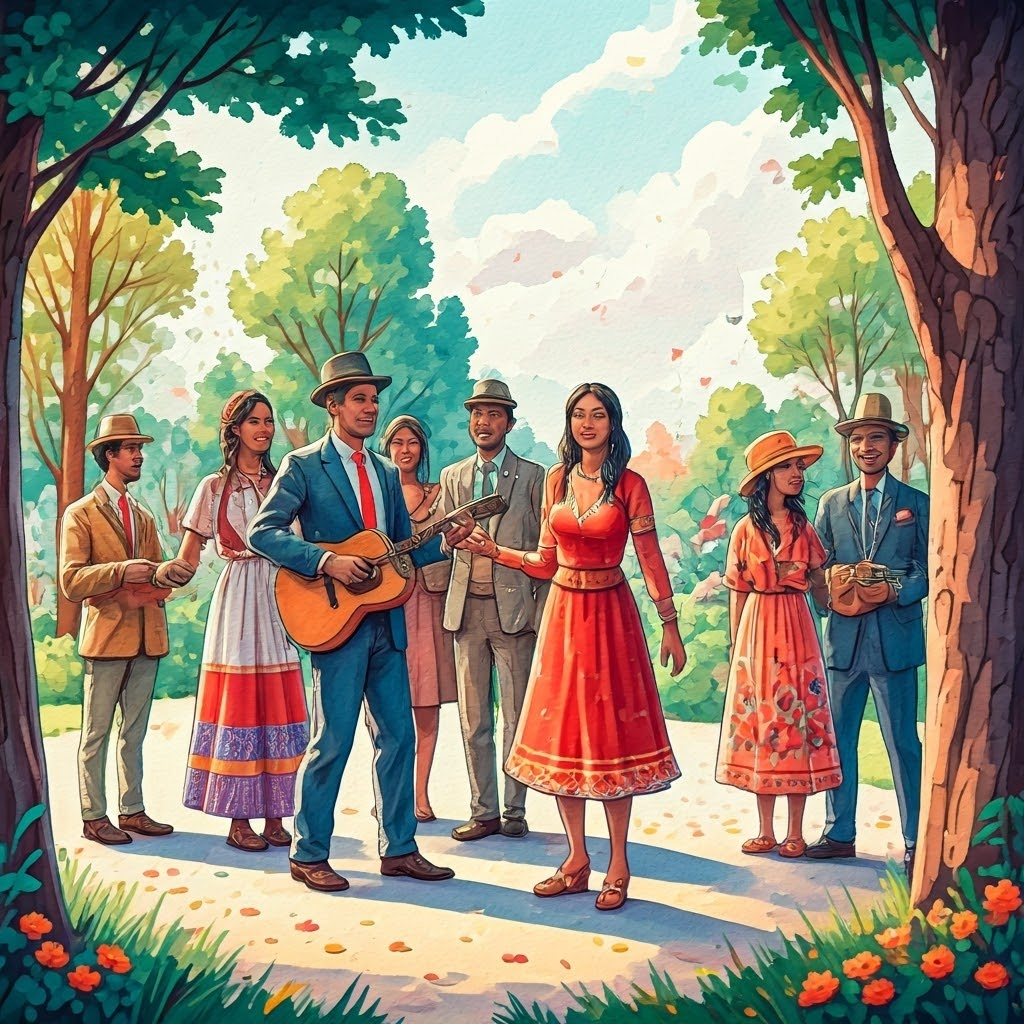
Canada's identity comes from a rich mix of cultures created by many waves of immigrants. Each group adds its flavor to society, making it more inclusive and welcoming. Laws like the Multiculturalism Act help honor and celebrate this mix. This creates a space where different languages, traditions, and histories live well together. Today's Canada shows off this multicultural spirit by supporting events and festivals that feature cultural heritage. Knowing this helps us appreciate Canada's past and encourages conversations about identity and the sense of belonging in our changing society.
Immigration Waves and Their Contributions
Throughout Canadian history, different waves of immigration greatly changed the culture of the nation. Early settlers, like the French and British, helped shape New France and set up important trade routes. As farming grew, people from Eastern Europe, Asia, and the Caribbean came and shared their traditions, making Canadian society richer. Many refugees, such as those fleeing Nazi Germany, also played a key role in boosting multiculturalism. Each immigration wave brought economic growth and new industries, helping create a unique identity that showcases the contributions of many communities in Canada.
Policies Shaping Multiculturalism
Multiculturalism in Canada has developed through different policies that support inclusion and respect for diversity. The Canadian Multiculturalism Act, passed in 1988, was important. It acknowledged the cultural contributions of many groups, including First Nations and immigrant communities. The Official Languages Act also helps by recognizing both English and French. This shows the country's mixed heritage. Programs aimed at multicultural education and community involvement strengthen these policies. They allow a wide range of cultures to thrive. Canada's focus on diversity improves its identity and brings different groups of people together.
Celebrating Diversity in Modern Canada
A mix of cultures shapes modern Canada. This makes it one of the most lively and diverse countries in the world. You can see the contributions of different immigrant groups in the arts, food, and traditions that are enjoyed across the country.
Festivals like Diwali, Chinese New Year, and National Indigenous Peoples Day show this diversity. They help build understanding and appreciation among all Canadians. As policies develop, it is crucial to support inclusion and acknowledge past wrongs. By accepting diversity, Canada respects its history and builds a stronger future. This creates a place where everyone can do well.
Technological Advances and Innovations
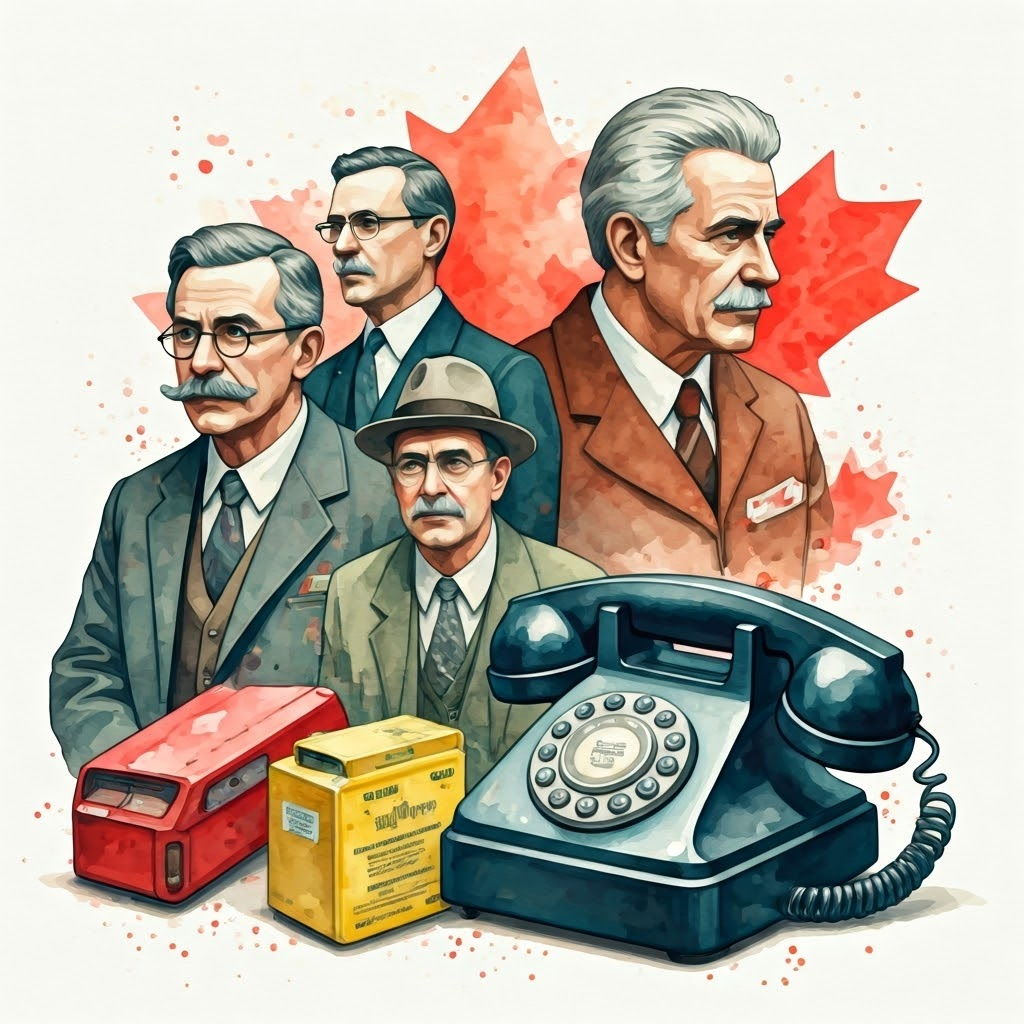
Throughout Canadian history, many technological advances have changed society. People like Alexander Graham Bell changed communication with the telephone. Others improved transportation, like the Canadian Pacific Railway, which helped move goods over long distances. The creation of the Bank of Canada also built a strong financial system, especially in tough economic times. The Royal Canadian Air Force contributed to aerospace developments, showing Canada's part in global growth. These innovations not only improved the economy but also brought people together. They show how important technology has been to Canada's strength and growth.
Inventions Originating from Canada
Canada is home to many important inventions that show how creative its people are. The telephone, made by Alexander Graham Bell, changed how we communicate and is still a key invention today. Also, the well-known ice hockey mask, created by Jacques Plante, improved safety in the sport. In medicine, Frederick Banting and Charles Best discovered insulin, which has saved millions of lives around the world. These inventions show a drive for progress, shaped by different cultures and a teamwork spirit. They add to Canada's history of creativity and new ideas.
Impact of Technology on Canadian Society
Technological progress has greatly changed Canadian society. It affects daily life, economic growth, and national identity. The Canadian Pacific Railway changed transportation. It improved trade and movement across large spaces. The growth of telecommunications and the internet connected communities more.
This helped break down distance and encouraged conversations between different cultures.
In farming, new machines and biotechnology have boosted productivity. This helps keep food supplies secure for more people. At the same time, Canadian inventions in areas like aerospace and medicine show how Canada is important in the world. These contributions help all of humanity. In short, technology keeps pushing forward progress and new ideas in Canada.
Prominent Canadian Inventors and Scientists
Many Canadian inventors and scientists have played important roles in global progress. Alexander Graham Bell is famous for inventing the telephone, which changed communication forever. Frederick Banting helped discover insulin, making a big difference in how diabetes is treated. Also, Thomas Edison’s work in electrical systems has connections to Canada. The lasting impact of these pioneers can be seen in many fields. This shows Canada’s part in encouraging creativity and exploration. Their successes inspire future generations. They also highlight the rich and diverse nature of Canadian history, adding to the story of innovation in North America.
Conclusion
Understanding Canadian history helps shape the nation’s identity. It also highlights the diverse cultures of its communities. From the start of confederation to the fight for civil rights, each part shows how important it is for provinces to work together. Key leaders played a big role in this journey. The impact of early explorers, important technology changes, and the celebration of multiculturalism can still be felt today. These elements remind Canadians of their shared past. They also show how important it is to stay united to build a better future. Embracing this history helps everyone feel like they belong.
Frequently Asked Questions
What are some must-know facts about Canada for kids?
Canada is famous for its large landscapes, nice people, and interesting history. Kids should know that Canada has ten provinces and three territories. It celebrates many different cultures and is home to amazing animals like moose and beavers. Learning these facts makes exploring Canada fun!
Who are some famous Canadian historical figures every child should know?
Children should learn about important people like Sir John A. Macdonald, who was the first Prime Minister, and Laura Secord, a brave woman in war. They can also look at the impact of famous explorers like Jacques Cartier and notable women like Nellie McClung in shaping Canadian history.
How did Indigenous cultures shape modern Canada?
Indigenous cultures have greatly shaped modern Canada. They have influenced the languages, traditions, and ways of governing. Their strong bond with the land helps promote caring for the environment. Additionally, their art and stories add richness to Canadian culture. Recognizing this impact is important for understanding Canada’s diverse identity today.
What was the significance of the Canadian Pacific Railway?
The Canadian Pacific Railway brought the nation together. It linked faraway provinces and helped with trade and immigration. This connection boosted economic growth. It improved transportation and built a stronger Canadian identity. The railway was also very important in helping people settle in Western Canada.
How has Canada's role in global conflicts influenced its national identity?
Canada's involvement in world conflicts, including the contributions of Canadian troops and the Canadian Forces, has built its national identity by creating unity and strength. By taking part in wars and peacekeeping missions, Canadians earned a reputation for being diplomatic. This has improved their diverse culture and dedication to helping others.
Reference
https://www.npg.org.uk/collections/search/portrait/mw14083/Queen-Anne-when-Princess
https://www.historicacanada.ca/heritageminutes
Related Articles :
Bonding Before Birth: The First-Time Parent's Guide to Cultivating a Brilliant, Emotionally Connected Child
The Unwritten Chapter: A New Parent Perspective
Creating Your Own Luck: A Data-Driven Approach to Success

Written with Augmented Intelligence and SHiNER The Human










